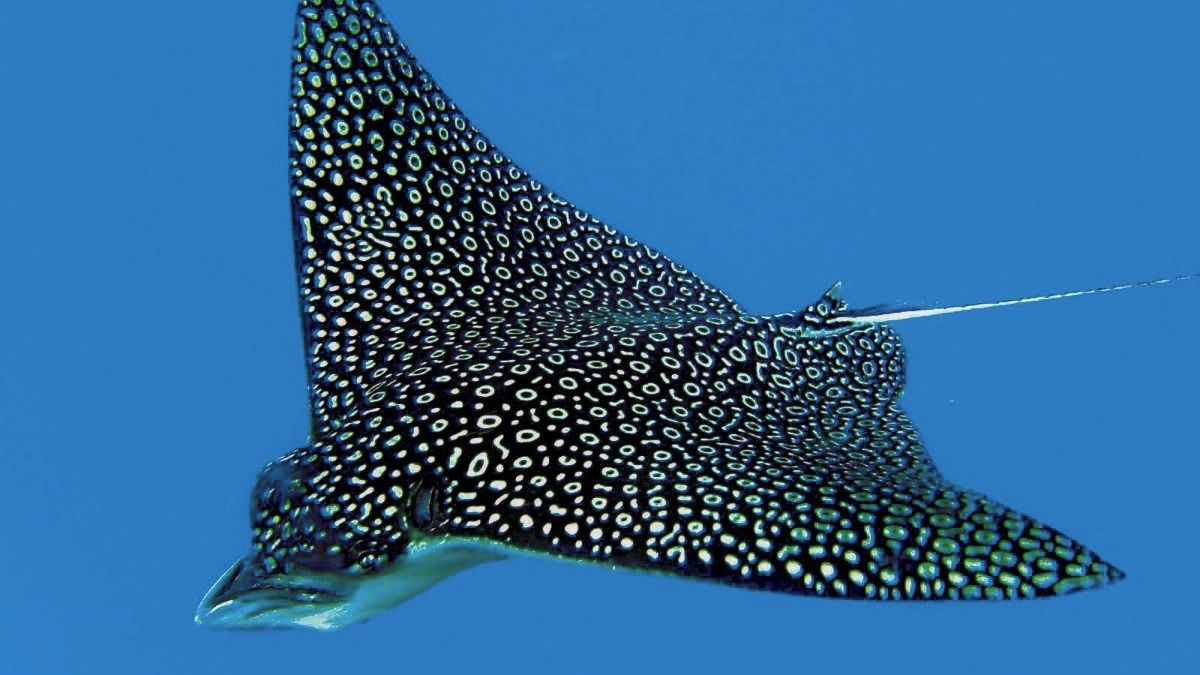
Short description
Class
Order
Family
Gender
Species
First of all we are going to describe the origin of this wonderful animal. Its scientific name is Aetobatus narinari and it belongs to the class Chondrichthyes, or in other words: it belongs to the same class as the SHARK!
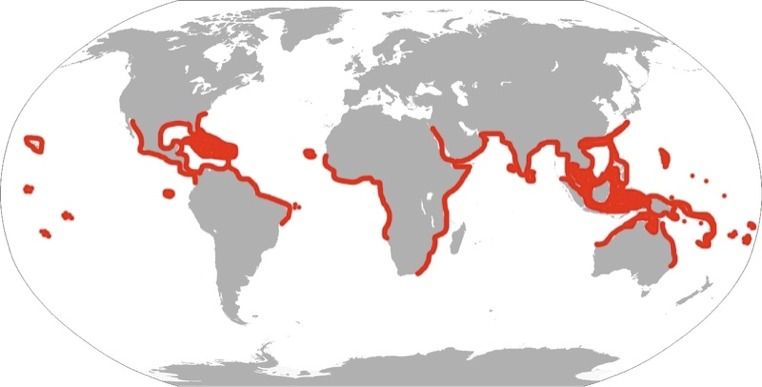
It is distributed throughout all tropical areas of the world, and we can find them alone or in groups quite frequently in the Dominican Caribbean. They are normally found in shallow waters and coral reefs.
This species of stingray is easily identifiable given its morphology. Its upper part is blue or black and has white spots. It has a white belly and a flat, round snout that resembles an eagle’s beak. It has a long whip-shaped tail that contains 2 to 6 poisonous spines.
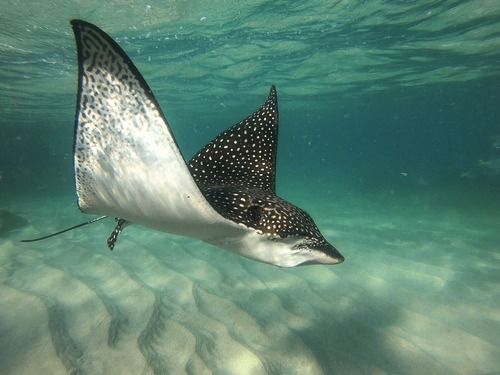
The eagle ray can weigh up to 230kg (507 pounds) and can measure up to 3 meters (10 feet) from fin to fin and 5 meters long (16.5 feet). Additionally, this species is sexually dimorphic. Sexual dimorphism is defined as a variation in external physiognomy that is determined by sex. In the case of the eagle ray it is a difference in size where the females are larger than the males.
Behavior
Now we can describe the behavior of the animal.
They are carnivorous predators and their diet is based on mollusks, crustaceans, octopuses and small fish. They are important for the conservation and cleaning of the seabed since they also eat sick fish, remains of dead invertebrates such as snails, shrimp, lobsters or sea cucumbers.
They have a highly evolved sense of smell that they use to search for food. Its snout is full of electro-sensory pores that locate its prey under the sand. They then use calcified jaws and chevron-shaped teeth to open hard shells.
The main predators of Aetobatus narinari are sharks. They are mainly attacked by bull sharks, hammerhead sharks, lemon sharks, silvertip sharks and tiger sharks.
Eagle rays are ovoviviparous. That is, they carry the eggs inside the mother’s body throughout their gestation period.
During the mating period, one or more males remain with the female. The faster male turns around the female by grabbing her pectoral fin with his jaw. At the time of copulation, they lie belly to belly with their lower limbs together. The insemination process lasts 40 to 100 seconds.
The female retains the fertilized eggs for a year and gives birth to up to four young.
Stingrays reach sexual maturity between 4 and 6 years of age, and live approximately 25 years.
Now, why does the eagle ray jump?
When rays are outside their normal swimming area, they usually gather in loose groups of between 3 and 16 individuals that swim in the same direction and at the same speed, having occasional interactions with each other. This is called loose aggregation.
During these swims they perform two types of jumps:
- Vertical: The ray propels itself vertically, rising out of the water and returning along the same line.
- 45 degrees: The stingray jumps at an angle of 45 degrees and repeats the process several times at high speed, giving the sensation that it is flying.
To date, it has not been possible to study or demonstrate the reason for the jumps and flights. But scientists have several hypotheses:
- The jumps allow them to deworm themselves and eliminate the remoras that they have attached.
- It can be a form of communication with other rays since when they fall they produce a noise that can be heard several kilometers away.
- Reason for seducing his partner prior to mating.
- Solely for entertainment purposes in the same way that dolphins surf the waves.
We believe that they also use it to flee from predators as we can see in the following photos published in the New York Post where the reported eagle ray flees from the attack of a hammerhead shark.
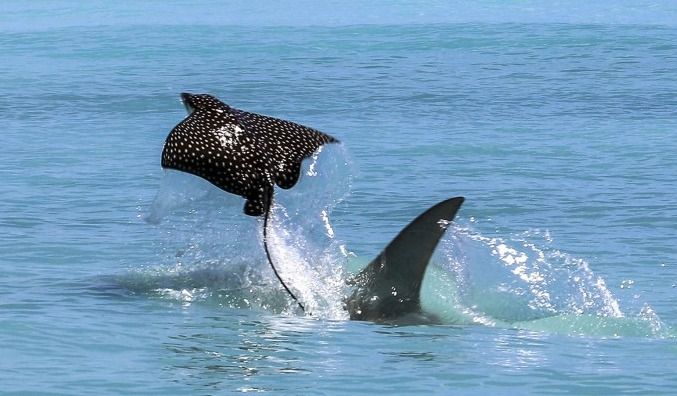
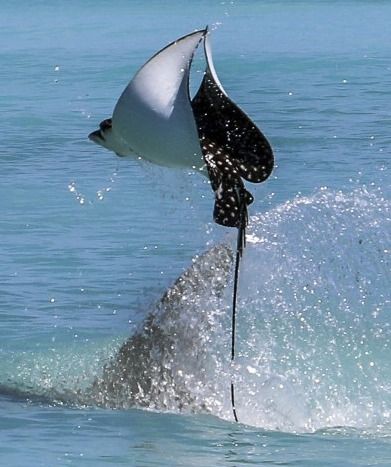
Whatever the reason for the flights, they are a spectacle of nature and we hope that over time we will be able to investigate this topic further.
And you, why do you think eagle rays jump out of the water?
Later we will publish a post about the migrations of giant manta rays (Mobula birostris), which can jump more than 3 meters above the water.
You can write to us for any information you need.
Stay informed with us!


